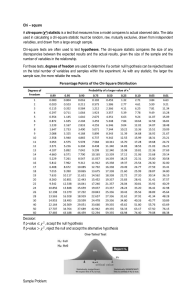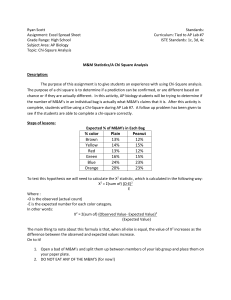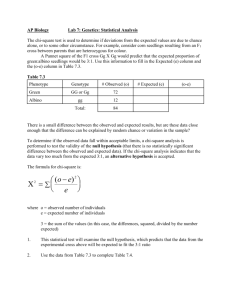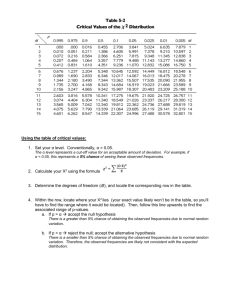Pre-Lab 7: Genetics of Organisms
advertisement
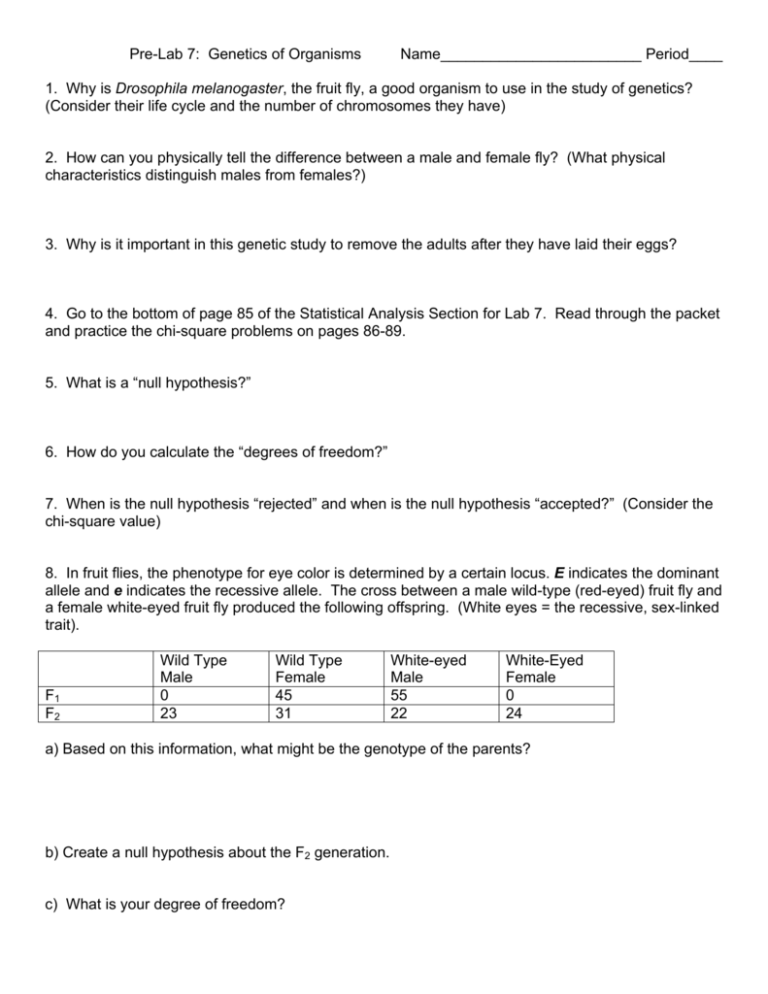
Pre-Lab 7: Genetics of Organisms Name________________________ Period____ 1. Why is Drosophila melanogaster, the fruit fly, a good organism to use in the study of genetics? (Consider their life cycle and the number of chromosomes they have) 2. How can you physically tell the difference between a male and female fly? (What physical characteristics distinguish males from females?) 3. Why is it important in this genetic study to remove the adults after they have laid their eggs? 4. Go to the bottom of page 85 of the Statistical Analysis Section for Lab 7. Read through the packet and practice the chi-square problems on pages 86-89. 5. What is a “null hypothesis?” 6. How do you calculate the “degrees of freedom?” 7. When is the null hypothesis “rejected” and when is the null hypothesis “accepted?” (Consider the chi-square value) 8. In fruit flies, the phenotype for eye color is determined by a certain locus. E indicates the dominant allele and e indicates the recessive allele. The cross between a male wild-type (red-eyed) fruit fly and a female white-eyed fruit fly produced the following offspring. (White eyes = the recessive, sex-linked trait). F1 F2 Wild Type Male 0 23 Wild Type Female 45 31 White-eyed Male 55 22 White-Eyed Female 0 24 a) Based on this information, what might be the genotype of the parents? b) Create a null hypothesis about the F2 generation. c) What is your degree of freedom? d) Complete a chi-squared test on the F2 generation to analyze your prediction. Phenotype # Observed (o) # Expected (e) (o-e) (o-e)2 (o-e)2 e Chi Square Value X2 = Σ(o-e)2 e e) Use table 7.5 on page 86 to find your chi-square critical values. Determine if your null hypothesis is accepted or rejected.

